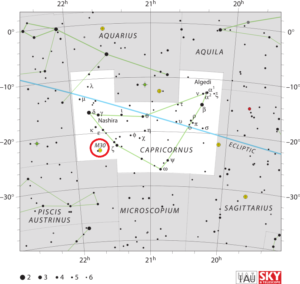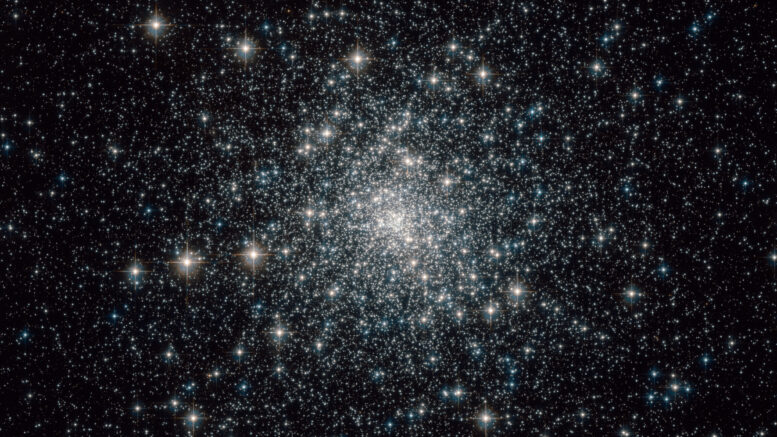Messier 30 may originate from one of Milky Way’s satellite galaxies, as it moves in a retrograde orbit through the galaxy’s inner halo. It was created more than 13 billion years ago. Like many other Messier objects, Messier 30 has gone through a core collapse.
| Description | |
| Visible From Pacific Northwest | July Through September |
| Best Time To Observe | August |
| Minimum Size Of Viewing Device | 10×50 binoculars |
| Object Type | Globular Cluster |
| Designations | Messier 30, M30, NGC 7099, GCl 122, C 2137-234, MWSC 3543 |
| Right Ascension | 21h 40m 22.12s |
| Declination | -23°10’47.5” |
| Constellation | Capricornus |
| Number Of Stars | 150,000 |
| Apparent magnitude | +7.7 |
| Apparent dimensions | 12′ |
| Object Radius | 46.5 light years |
| Distance From Earth | 27,140 light years |
History
Messier 30 was discovered by Charles Messier on August 3, 1764. Messier included the object as the 30th entry in his catalogue thinking it was a nebula:
In the night of August 3 to 4, 1764, I have discovered a nebula below the great tail of Capricornus, & very near the star of sixth magnitude, the 41st of that constellation, according to Flamsteed: one sees that nebula with difficulty in an ordinary [non-achromatic] refractor of 3 feet [FL]; it is round, & I have not seen any star: having examined it with a good Gregorian telescope which magnifies 104 times, it could have a diameter of 2 minutes of arc. I have compared the center with the star Zeta Capricorni, & I have determined its position in right ascension as 321d 46′ 18″, & its declination as 24d 19′ 4″ south. This nebula is marked in the chart of the famous Comet of Halley which I observed at its return in 1759.
William Herschel would identify M30 as a star cluster in 1783.
Locating M30 In The Sky
M30 can be tough to find as Capricornus is a relatively faint constellation, especially for observers in northern latitudes, where the celestial goat never rises very high above the southern horizon. Capricornus lies southeast of Aquila and east of Sagittarius.
M30 is located just a few degrees to the southeast of Marakk, Zeta Capricorni, a binary star system consisting of a fourth magnitude yellow supergiant and a white dwarf. 41 Capricorni, a magnitude 5.2 star, lies just to the east of the cluster, making it easier to find in finderscopes.

Viewing M30
Messier 30 is invisible to the naked eye, but can easily be seen in 10×50 binoculars. It appears as a slightly elongated hazy patch of light about 4 arc minutes across in binoculars, and makes an even finer target for small telescopes. The cluster can’t be resolved at low power and its stars are only revealed by 4-inch and larger instruments. 8-inch telescopes will show a bright small core and the cluster’s large halo
Photographing M30
As with any cluster of stars, precise auto guiding will be crucial as making sure the stars are crisp is crucial to any image. There aren’t a plethora of guides available for those looking to specifically imaging M30, as the best one could potentially find would be on astrobin or astroimages.de. It is definitely possible with a modified DSLR, but will require a telescope with guiding to track M30.
Sources And Further Reading
Descriptions of all of Messier Objects can be found here.
https://www.nasa.gov/feature/goddard/2017/messier-30/

Be the first to comment on "Messier 30"